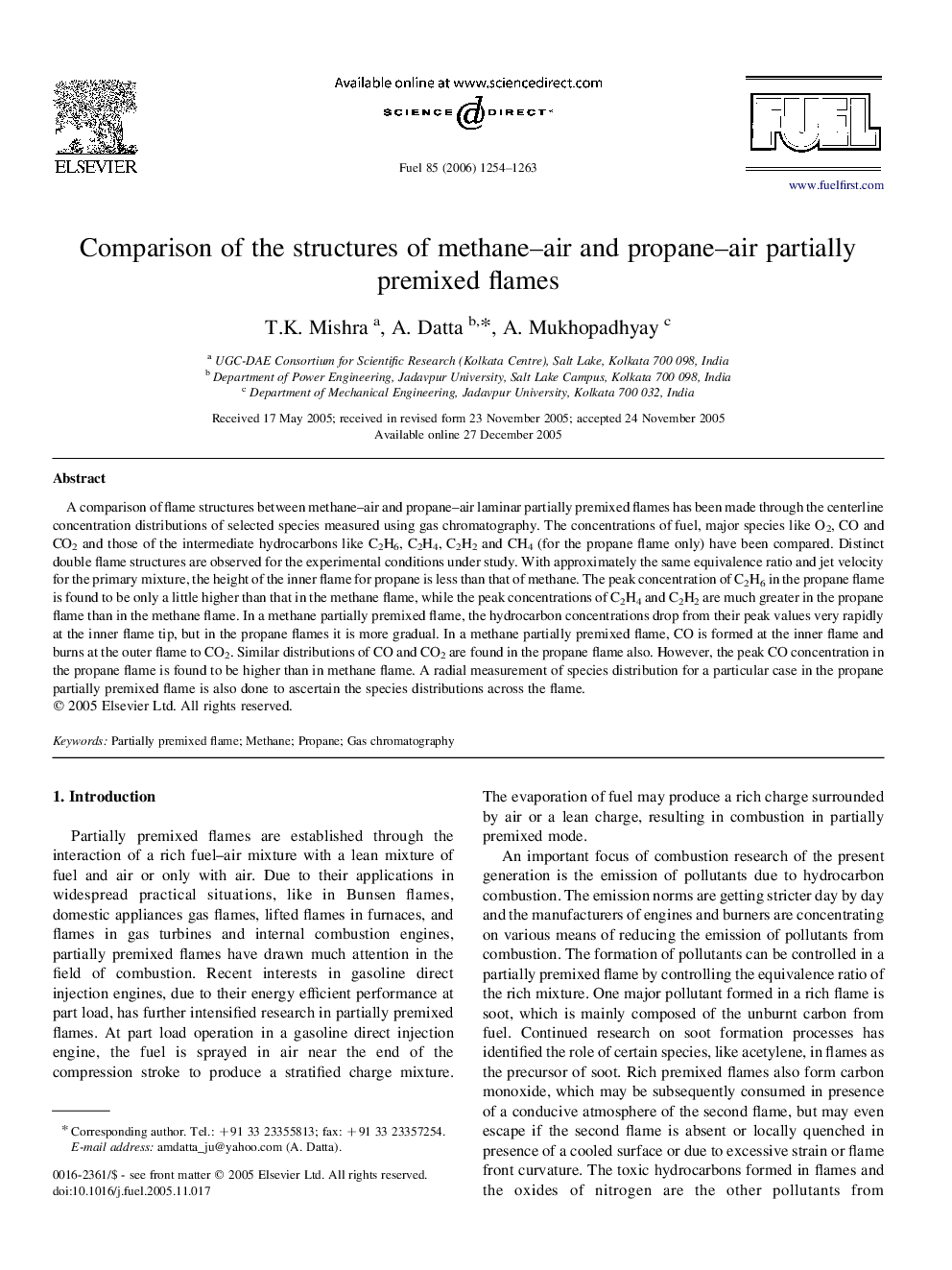| Article ID | Journal | Published Year | Pages | File Type |
|---|---|---|---|---|
| 208700 | Fuel | 2006 | 10 Pages |
A comparison of flame structures between methane–air and propane–air laminar partially premixed flames has been made through the centerline concentration distributions of selected species measured using gas chromatography. The concentrations of fuel, major species like O2, CO and CO2 and those of the intermediate hydrocarbons like C2H6, C2H4, C2H2 and CH4 (for the propane flame only) have been compared. Distinct double flame structures are observed for the experimental conditions under study. With approximately the same equivalence ratio and jet velocity for the primary mixture, the height of the inner flame for propane is less than that of methane. The peak concentration of C2H6 in the propane flame is found to be only a little higher than that in the methane flame, while the peak concentrations of C2H4 and C2H2 are much greater in the propane flame than in the methane flame. In a methane partially premixed flame, the hydrocarbon concentrations drop from their peak values very rapidly at the inner flame tip, but in the propane flames it is more gradual. In a methane partially premixed flame, CO is formed at the inner flame and burns at the outer flame to CO2. Similar distributions of CO and CO2 are found in the propane flame also. However, the peak CO concentration in the propane flame is found to be higher than in methane flame. A radial measurement of species distribution for a particular case in the propane partially premixed flame is also done to ascertain the species distributions across the flame.
